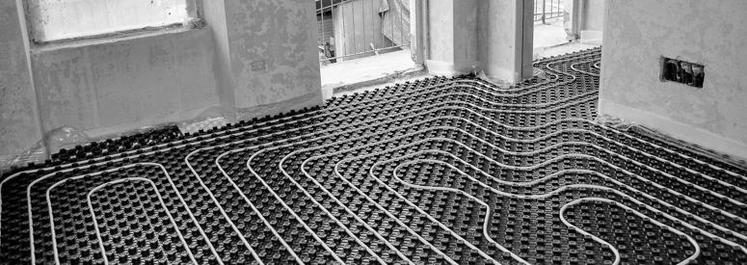
In the UK the term ‘tog rating’ is usually linked with duvets and most of the people don’t associate it with flooring. However, we should remember that this rating also refers to carpets and rugs. And you may be even more surprised that underlays used when fitting wooden floors also have a tog rating. Let us explain what tog rating actually is and what it is used for.
Tog refers to the effectiveness of thermal insulation of a given material, or, in a simpler language, it tells you how warm a material will keep you. This idea was introduced in 1940s by the Shirley Institute in Manchester and is most often used, as mentioned before, in assessing thermal properties of duvets. Nowadays, people are aware what an approximately 3 – 4.5 tog duvet is one that should be used during summer, while a 12 – 13.5 tog duvet and the likes will keep you warm during winter time. But, people are not aware or tend to forget about the importance of tog rating in terms of flooring.
If you’re going to have a draughty old house re-floored and if there are large gaps in wooden floors, it is very advisable to think about the tog rating of not only your carpet but also your underlay. And what if underfloor heating (UFH) is installed there? UFH has grown very popular recently and so people should carefully consider that while making flooring-related decisions, when fitting a new floor. This will allow you to avoid many problems and spare you a lot of time and money later on.
Needless to say, underfloor heating has numerous advantages, one of them being the fact that it uses the natural passage of heat. As heat always goes up, it makes perfect sense to place the source of heat at the lowest point in an interior. As radiators are in most cases installed at about waist level, the heat they emit goes up to head-height and subsequently comes down again as cooler air. UFH prevents that, allowing you to maximise heating efficiency.
Water and electric based underfloor heating
We differentiate between two types of UFH: water and electric. Water-based under floor heating is based on the circulation of warm water through a series of pipes, which is installed underneath the floor. It is connected to a boiler or a solar water heating system and is thought of as an efficient method of heating homes – and that’s because it has been designed to work well with a lower water temperature than in the case of traditional radiators.
However, it also has several drawbacks. Those include: a large number of pipes that are necessary; the skills required to install it right and the fact that it’s cost-effective only in larger rooms. Moreover, the pipes require more depth as compared to the electric installation, and that’s the reason why many people go for electric UFH.
As far as electric underfloor heating is concerned – it’s a series of electric wires which are installed within or under the flooring. Moreover, it’s frequently the case that electric UFH is installed in sheets with loose-fit wiring with the aim of accommodating tight or awkward spaces. Electric underfloor heating is definitely more straightforward in terms of installation than water-based UFH, and as such it’s definitely more recommended for competent DIY-ers (yet, you should always have a qualified electrician make the final mains connection). A major drawback of electric underfloor heating is its cost – it is definitely a more expensive option to run than water-based underfloor heating.
If you’ve already made up your mind as to what kind of underfloor heating is most appropriate for your flooring project, you should now specify your flooring plans in more detail. If you’re going to have a carpet, you’ll need to choose one that allows the passage of heat, or else your efforts and investment will turn out to be unnecessary and counterproductive. As a rule of thumb, a carpet with a tog rating of 1.5 or less will be perfect in this case. However, you also need to consider the underlay you’ll use with the carpet. Usually, a lightweight 0.5 tog sponge underlay will work well, but if you’re in any doubt, always remember that it’s better to consult your supplier than to regret having done something wrong.
As far as a wood flooring underlay is concerned, get one with a tog rating of 0.5 or less – in this way you will ensure that the heat can pass freely. In most cases tog rating is indicated on wood flooring underlays and there is also a clear indication there as to whether they are appropriate for use with underfloor heating or not. But, always remember that it’s best to ask for advice and additional information if you’re in any doubt.
| Mon-Fri | 8:00AM – 5:00PM |
| Saturday | 10:00AM – 4:00PM |
| Sunday | 11:00AM – 3:00PM |





.svg)
.svg)